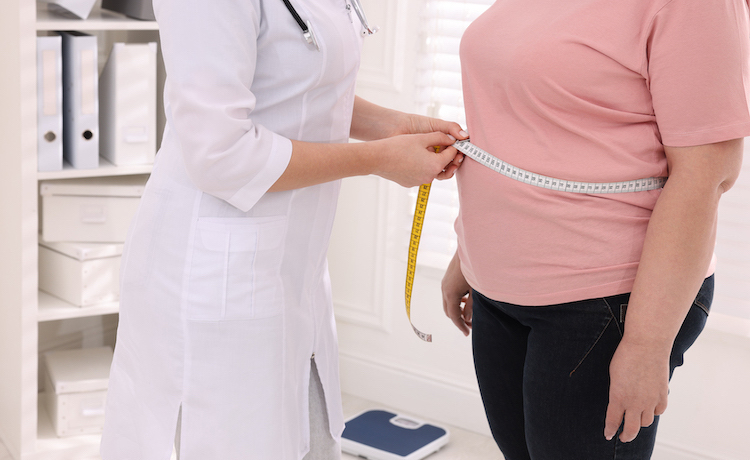Gastric Balloon: The New Non-Surgical Weight Loss Method
The Gastric Balloon is one of the increasingly popular weight loss methods today, especially for those who have difficulty losing weight through other means, such as diet control or exercise. The gastric balloon is a non-surgical option that can help achieve effective weight loss. This article will explain how the gastric balloon works, its advantages, and who is suitable for this treatment.
What is the Gastric Balloon?
The gastric balloon is a soft, flexible silicone device inserted into the stomach through the mouth using an endoscope. Once the balloon is in the stomach, it is filled with saline solution to inflate it, which reduces the stomach's volume, making the patient feel full sooner and eat less.
The Gastric Balloon Insertion Procedure

The gastric balloon insertion is a procedure performed by a specialized gastroenterologist, with the following steps:
- Starts with an endoscope to guide the balloon into the stomach through the mouth. The patient receives a local anesthetic or light sedation for comfort during the process.
- Once the balloon is in the stomach, the doctor fills the balloon with approximately 400–700 milliliters of saline solution to fully inflate it. The amount of saline used depends on the patient's stomach size and weight loss needs.
- The entire process takes about 20–30 minutes. Afterward, the patient can return home on the same day.
The gastric balloon stays in place for approximately 6 months, after which it must be removed. The removal process is similar to the insertion; the doctor deflates the balloon by removing the saline before retrieving it from the stomach for subsequent weight loss and health evaluation.
Advantages of the Gastric Balloon
- Non-Surgical: It is a weight loss method that does not require surgery, resulting in a short recovery time and a quick return to daily activities.
- Effective Weight Loss: Can help patients lose 10–15% of their total body weight within 6 months.
- Improved Overall Health: Weight loss can help reduce the risk of various diseases such as diabetes, high blood pressure, and heart disease.
- Preparation for Bariatric Surgery: In some cases, the gastric balloon may be used to help reduce weight before major surgery, making the subsequent surgery more effective.
Potential Side Effects
Although the gastric balloon is a safe method, some patients may experience the following side effects:
- Nausea and Vomiting: Nausea and vomiting can occur during the first week after balloon insertion, but they gradually subside as the body adjusts.
- Abdominal Pain or Discomfort: Some patients may feel abdominal pain or discomfort initially, which can be relieved with medication as advised by the doctor.
- Bloating and Acid Reflux: The gastric balloon may cause increased bloating or acid reflux, which may require dietary adjustments or medication for relief.
- Sleep Problems: Some individuals may find sleeping uncomfortable due to the sensation in the stomach.
Suitable Candidates for Gastric Balloon Insertion
- Individuals with a Body Mass Index (BMI) of 27–40 who have been unable to lose weight by other means.
- Those requiring short-term weight loss, such as before surgery.
- Individuals who are moderately overweight or obese and are not yet ready or suitable for bariatric surgery.
- Those with underlying conditions that would improve with weight loss, such as Type 2 Diabetes or high blood pressure.
- Individuals committed to seriously beginning weight loss to adjust their lifestyle and eating habits.
- Those who have attempted other weight loss methods, such as diet control and exercise, without success.
Preparation Before Gastric Balloon Insertion
Before undergoing gastric balloon insertion, patients should:
- Consult a doctor to evaluate the suitability of the treatment and review their health history in detail.
- Fast from food and drink for 6–8 hours before the procedure to ensure the stomach is empty.
- Inform the doctor about all current medications, especially those affecting blood clotting, as some may need to be temporarily stopped.
- Prepare for a short recovery period after the insertion, such as arranging a caregiver or ride home.
Self-Care and Follow-up After Gastric Balloon Insertion
After balloon insertion, patients should:
- Attend regular follow-up appointments with the doctor to monitor progress and evaluate weight loss results.
- Rest adequately and avoid strenuous activities immediately after the insertion.
- Take medication for discomfort, as advised by the doctor, if experiencing nausea or abdominal pain.
- Adopt lifestyle changes for better weight loss results, such as diet control and light exercise.
Dietary Regimen After Balloon Insertion
Adjusting the diet is crucial after balloon insertion:
- Start with a liquid diet for the first 2–3 days, then gradually switch to soft foods.
- Avoid high-sugar, high-fat, or reflux-triggering foods.
- Eat small, frequent meals to prevent overworking the stomach.
- Drink enough water throughout the day, but avoid drinking water during meals.
Conclusion
The gastric balloon is an effective, non-surgical weight loss method. It can help achieve rapid weight loss and improve overall health. Those interested should consult a doctor to evaluate suitability and potential benefits. Adopting changes in eating habits and exercise after balloon insertion is also crucial for sustainable results.



